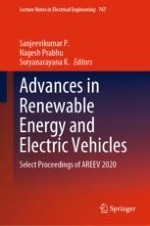This book presents select proceedings of the International Conference on Advances in Renewable Energy and Electric Vehicles (AREEV 2020), and examines related emerging trends, feasible solutions to shape and enable the development of mankind. The topics covered include renewable energy sources, electric vehicles, energy storage systems, power system protection & security, smart grid and wide band-gap semiconductor technologies. The book also discusses applications of signal processing, artificial neural networks, optimal and robust control systems, and modeling and simulation of power electronic converters. The book will be a valuable reference for beginners, researchers, and professionals interested in power systems, renewable energy, and electric vehicles.
